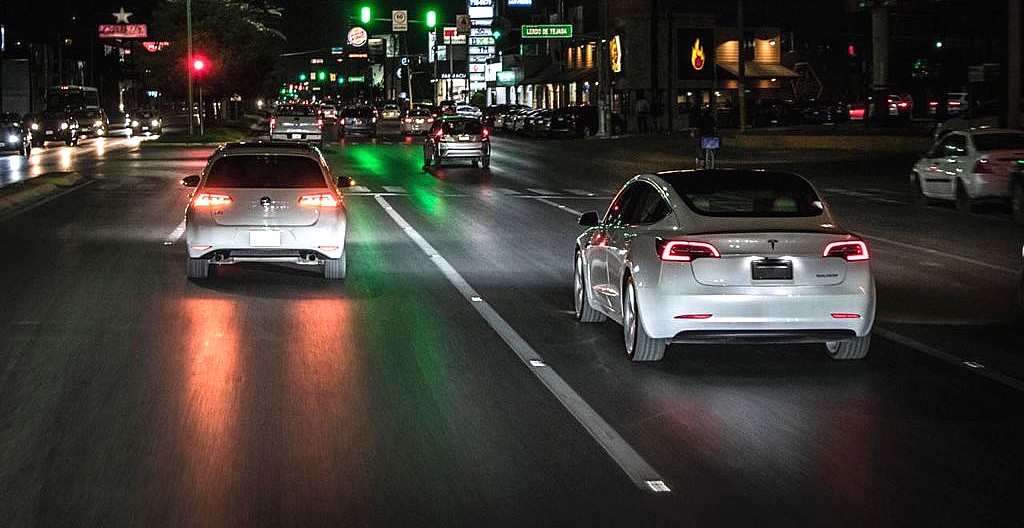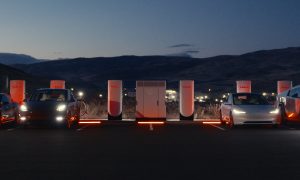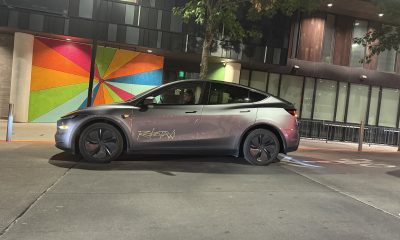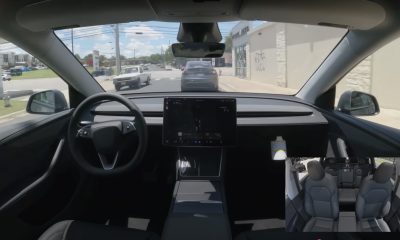In a flash of dramatic irony, Andrew Wheeler, the Administrator of the US Environmental Protection Agency, praised the Trump administration’s Safer Affordable Fuel Efficient (SAFE) Vehicles rule, a rollback of fuel economy standards that would allow automakers to sell more polluting vehicles in the United States.
“Too many reporters fail to mention one very important point: the Obama era CAFÉ standards were not attainable by the auto industry. The truth is, the SAFE rule sets realistic standards, will reduce pollution, and save lives!” Wheeler posted.
Such statements, of course, attracted strong responses. In a call with reporters on Tuesday, California attorney general Xavier Becerra remarked that the EPA Administrator’s Twitter announcement was downright wrong. “(EPA administrator Andrew Wheeler) issued a tweet saying that this new rule would save lives, and reduce pollution, and that it would provide significant benefits to the American economy. In each case, he’s wrong,” Becerra said.
On Tuesday, the National Highway Traffic Safety Administration and the Environmental Protection Agency announced the SAFE standards that will take the place of the Obama-era Corporate Average Fuel Economy (CAFE) rules, which required about 5% annual improvements in fuel efficiency every year from carmakers.
Under the CAFE rules, the EPA noted that automakers would have been required to sell cars and light trucks with an average fuel efficiency of about 54 miles per gallon in 2026 model cars. With the current administration’s SAFE rules, vehicles could simply average about 40 miles per gallon by 2026 to meet the new standards.
In a way, Wheeler’s tweet boiled down to one point. The old CAFE standards were simply unrealistic, and America needs the new SAFE rules to make sure automakers and car buyers win out. Interestingly enough, the EPA official’s post came amidst an ongoing climate crisis and a literal pandemic that involves a virus attacking people’s capability to breathe.
Bad timing and taste aside, the EPA Administrator appears to have conveniently forgotten one particular American carmaker that has had absolutely no problem meeting the “unrealistic” standards of the Obama-era CAFE rules. This carmaker currently stands as the most valuable US-based automaker by market cap, and in recent quarters, it has even turned a profit, highlighting the argument that there is a substantial demand and a solid business model for zero-emissions vehicles.
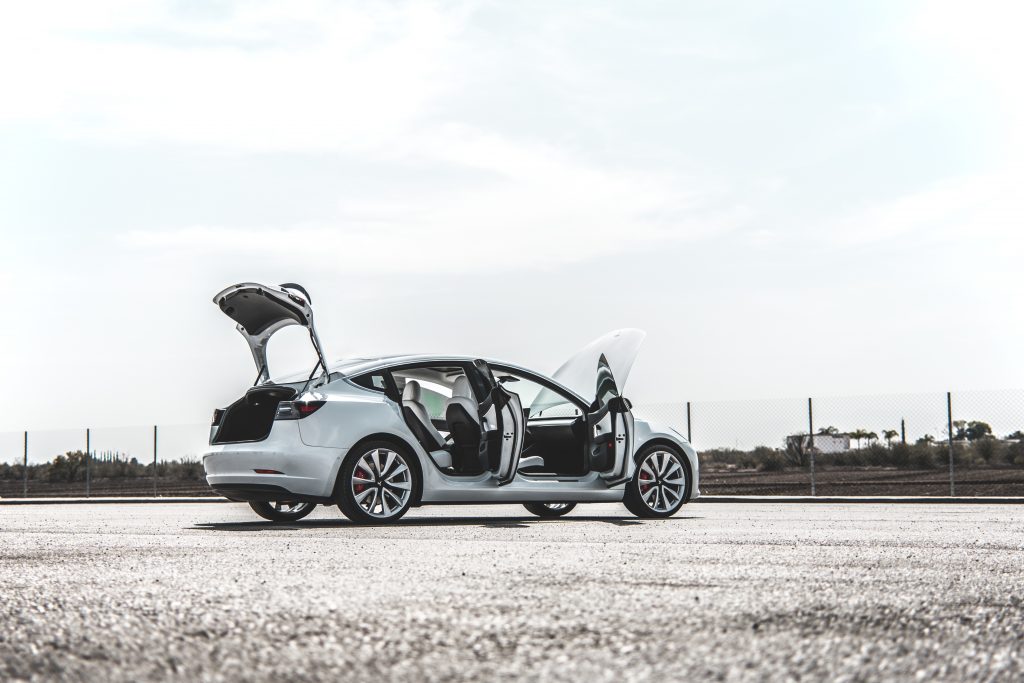
This carmaker, of course, is Tesla. The company had been producing electric cars since 2008, and it has been mass-producing vehicles since 2012. With the Model 3, Tesla started breaking into the mainstream market, with some car buyers trading in otherwise more affordable vehicles to acquire the electric sedan. A crossover, the Model Y, has begun deliveries ahead of schedule, and if initial impressions from professional reviewers are any indication, there’s a good chance that the all-electric crossover will be a disruptor as well.
With the United States’ SAFE rules, automakers like Ford and GM will likely have less incentive to push electric cars. This may be detrimental to both companies, considering that leaked production plans from both GM and Ford have shown that the veteran automakers are still committed to the internal combustion engine despite their pro-EV rhetoric. This could be a costly move for GM and Ford, since territories outside the United States, such as Europe and China, have committed to electrification.
But amidst all these, there is a silver lining. If veteran automakers like Ford and GM will not step up to the plate and provide good electric cars to meet the demand from buyers, a new breed of EV companies will. Tesla has proven that a well-designed, feature-rich, all-electric car like the Model 3 can dominate their established internal combustion counterparts. There’s a good chance that vehicles like the Cybertruck, or perhaps Rivian’s R1T, could do the same for high-end F-150s and RAM trucks.
In a way, the adjustment of the United States’ emissions standards could prove to be an opportunity for electric car makers. Beyond the United States, after all, authorities are going all-in on electric cars. And for some territories such as Europe and China, there is no more turning back.
Elon Musk
Tesla investors will be shocked by Jim Cramer’s latest assessment
Jim Cramer is now speaking positively about Tesla, especially in terms of its Robotaxi performance and its perception as a company.

Tesla investors will be shocked by analyst Jim Cramer’s latest assessment of the company.
When it comes to Tesla analysts, many of them are consistent. The bulls usually stay the bulls, and the bears usually stay the bears. The notable analysts on each side are Dan Ives and Adam Jonas for the bulls, and Gordon Johnson for the bears.
Jim Cramer is one analyst who does not necessarily fit this mold. Cramer, who hosts CNBC’s Mad Money, has switched his opinion on Tesla stock (NASDAQ: TSLA) many times.
He has been bullish, like he was when he said the stock was a “sleeping giant” two years ago, and he has been bearish, like he was when he said there was “nothing magnificent” about the company just a few months ago.
Now, he is back to being a bull.
Cramer’s comments were related to two key points: how NVIDIA CEO Jensen Huang describes Tesla after working closely with the Company through their transactions, and how it is not a car company, as well as the recent launch of the Robotaxi fleet.
Jensen Huang’s Tesla Narrative
Cramer says that the narrative on quarterly and annual deliveries is overblown, and those who continue to worry about Tesla’s performance on that metric are misled.
“It’s not a car company,” he said.
He went on to say that people like Huang speak highly of Tesla, and that should be enough to deter any true skepticism:
“I believe what Musk says cause Musk is working with Jensen and Jensen’s telling me what’s happening on the other side is pretty amazing.”
Tesla self-driving development gets huge compliment from NVIDIA CEO
Robotaxi Launch
Many media outlets are being extremely negative regarding the early rollout of Tesla’s Robotaxi platform in Austin, Texas.
There have been a handful of small issues, but nothing significant. Cramer says that humans make mistakes in vehicles too, yet, when Tesla’s test phase of the Robotaxi does it, it’s front page news and needs to be magnified.
He said:
“Look, I mean, drivers make mistakes all the time. Why should we hold Tesla to a standard where there can be no mistakes?”
It’s refreshing to hear Cramer speak logically about the Robotaxi fleet, as Tesla has taken every measure to ensure there are no mishaps. There are safety monitors in the passenger seat, and the area of travel is limited, confined to a small number of people.
Tesla is still improving and hopes to remove teleoperators and safety monitors slowly, as CEO Elon Musk said more freedom could be granted within one or two months.
News
Tesla launches ultra-fast V4 Superchargers in China for the first time
Tesla has V4 Superchargers rolling out in China for the first time.

Tesla already has nearly 12,000 Supercharger piles across mainland China. However, the company just initiated the rollout of the ultra-fast V4 Superchargers in China for the first time, bringing its quick-charging piles to the country for the first time since their launch last year.
The first batch of V4 Superchargers is now officially up and running in China, the company announced in a post on Chinese social media outlet Weibo today.
The company said in the post:
“The first batch of Tesla V4 Superchargers are online. Covering more service areas, high-speed charging is more convenient, and six-layer powerful protection such as rain and waterproof makes charging very safe. Simultaneously open to non-Tesla vehicles, and other brands of vehicles can also be charged. There are more than 70,000 Tesla Superchargers worldwide. The charging network layout covers 100% of the provincial capitals and municipalities in mainland China. More V4 Superchargers will be put into use across the country. Optimize the charging experience and improve energy replenishment efficiency. Tesla will accompany you to the mountains, rivers, lakes, and seas with pure electricity!”
The first V4 Superchargers Tesla installed in China are available in four cities across the country: Shanghai, Zhejiang, Gansu, and Chongqing.

Credit: Tesla China
Tesla has over 70,000 Superchargers worldwide. It is the most expansive and robust EV charging network in the world. It’s the main reason why so many companies have chosen to adopt Tesla’s charging connector in North America and Europe.
In China, some EVs can use Tesla Superchargers as well.
The V4 Supercharger is capable of charging vehicles at speeds of up to 325kW for vehicles in North America. This equates to over 1,000 miles per hour of charging.
Elon Musk
Elon Musk hints at when Tesla could reduce Safety Monitors from Robotaxi
Tesla could be reducing Safety Monitors from Robotaxi within ‘a month or two,’ CEO Elon Musk says.

Elon Musk hinted at when Tesla could begin reducing Safety Monitors from its Robotaxis. Safety Monitors are Tesla employees who sit in the front passenger seat during the driverless rides, and are there to ensure safety for occupants during the earliest rides.
Tesla launched its Robotaxi fleet in Austin last Sunday, and after eight days, videos and reviews from those who have ridden in the driverless vehicles have shown that the suite is safe, accurate, and well coordinated. However, there have been a few hiccups, but nothing that has put anyone’s safety in danger.
A vast majority — close to all of the rides — at least according to those who have ridden in the Robotaxi, have been performed without any real need for human intervention. We reported on what was the first intervention last week, as a Safety Monitor had to step in and stop the vehicle in a strange interaction with a UPS truck.
Watch the first true Tesla Robotaxi intervention by safety monitor
The Tesla and UPS delivery truck were going for the same street parking space, and the Tesla began to turn into it. The UPS driver parallel parked into the spot, which was much smaller than his truck. It seemed to be more of an instance of human error instead of the Robotaxi making the wrong move. This is something that the driverless cars will have to deal with because humans are aggressive and sometimes make moves they should not.
The Safety Monitors have not been too active in the vehicles. After all, we’ve only seen that single instance of an intervention. There was also an issue with the sun, when the Tesla braked abnormally due to the glare, but this was an instance where the car handled the scenario and proceeded normally.
With the Robotaxi fleet operating impressively, some are wondering when Tesla will begin scaling back both the Safety Monitors and Teleoperators that it is using to ensure safety with these early rides.
CEO Elon Musk answered the inquiry by stating, “As soon as we feel it is safe to do so. Probably within a month or two.”
As soon as we feel it is safe to do so.
Probably within a month or two. We continue to improve the Tesla AI with each mile driven.
— Elon Musk (@elonmusk) June 30, 2025
Musk’s response seems to confirm that there will be fewer Teleoperators and Safety Monitors in the coming months, but there will still be some within the fleet to ensure safety. Eventually, that number will get to zero.
Reaching a point where Tesla’s Robotaxi is driverless will be another significant milestone for the company and its path to fully autonomous ride-sharing.
Eventually, Tesla will roll out these capabilities to consumer-owned vehicles, offering them a path to generate revenue as their car operates autonomously and completes rides.
For now, Tesla is focusing on perfecting the area of Austin where it is currently offering driverless rides for just $4.20 to a small group of people.
-

 News5 days ago
News5 days agoTesla Robotaxi’s biggest challenge seems to be this one thing
-

 News2 weeks ago
News2 weeks agoTesla confirms massive hardware change for autonomy improvement
-

 Elon Musk2 weeks ago
Elon Musk2 weeks agoElon Musk slams Bloomberg’s shocking xAI cash burn claims
-

 News2 weeks ago
News2 weeks agoTesla features used to flunk 16-year-old’s driver license test
-

 News2 weeks ago
News2 weeks agoTesla China roars back with highest vehicle registrations this Q2 so far
-

 News2 weeks ago
News2 weeks agoTexas lawmakers urge Tesla to delay Austin robotaxi launch to September
-

 News2 weeks ago
News2 weeks agoTesla dominates Cars.com’s Made in America Index with clean sweep
-

 News2 weeks ago
News2 weeks agoTesla’s Grok integration will be more realistic with this cool feature

